The centuries go by, the writings remain. Books, both works of art and boxes of secrets, become precious testimonies of the past. Thus the exceptional old collections of the Media Library of Troyes scroll through the rich history of the city and its region.
An invaluable fund
Most of these paper jewels with old bindings are enthroned in the Great Hall of the building, covering the walls, from floor to ceiling, with their old bindings. This fascinating space, where the temperature is maintained at 18°C, is only accessible by guided tour.
Among the thousands of printed books , most of which come from old ecclesiastical libraries, are crowned by two impressive globes, one celestial and the other terrestrial. Dating from 1640, they are signed Willem Blaeu, a renowned cartographer renowned for his scientific accuracy. The globes, made up of spindles engraved on paper and watercolored then varnished, are mounted on a papier-mâché sphere supported by a period wooden base. With their 68 cm diameter, they were at the time the most voluminous ever built . Unusual detail:the globe still bears the mark of a cannonball received on February 24, 1814 during the Napoleonic Wars!
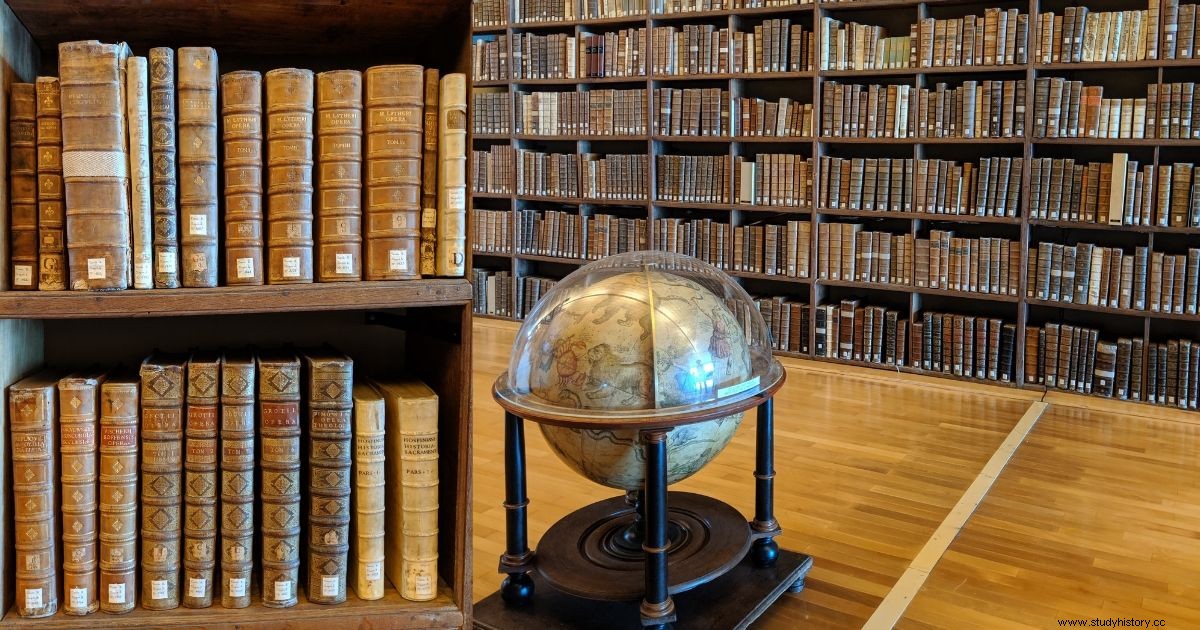
The media library also retains a large part of the personal library of Count Henri de Champagne (oldest known library of a prince of the High Middle Ages), but also the largest collection in France of booklets from the "Blue Library as well as never-before-seen examples of "advertisement cards ". Its treasure is a fund of ancient manuscripts copied and decorated in the scriptorium of the famous Abbey of Clairvaux. I take you to discover these wonders that say a lot about the leading role played by the city over the centuries!
Clairvaux:reference library of the medieval West
In 1115, Abbot Bernard de Fontaine and a few companions of the Cistercian order founded Clairvaux Abbey in Dawn. Due to the extraordinary personality of Bernard of Clairvaux, canonized in 1174, it quickly became one of the most powerful Cistercian abbeys and radiates around the world . Its very active scriptorium copied several hundred manuscripts and very quickly formed one of the most considerable libraries of the medieval West.
The main principles of order, simplicity and simplicity , also apply to the arts, including calligraphy. Criticizing illuminations (an art in which the monks are past masters) and disapproving of dazzling colors, Bernard of Clairvaux imposed that "the letters should be made of a single color and not historiated ". No frills: the works must inspire meditation in readers and convey the austerity of Cistercian monastic life.
This "monochrome" style in blue, red, green and yellow is extremely rare . This calligraphic peculiarity (which does not lack aesthetics) makes the a Grande Bible of Saint Bernard , copied in the 1150s, absolutely unique! I was able to admire this great masterpiece, presented during my visit in a window on the occasion of the exhibition "a thousand years of books in Troyes". A pure marvel...
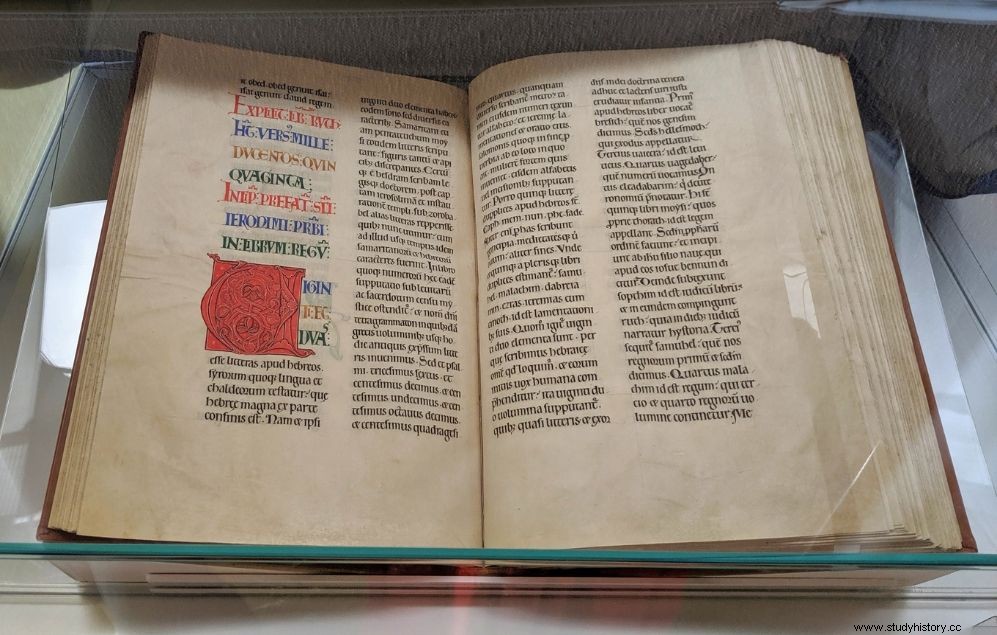
From 1245, the Clairvaux library forged close ties with the University of Paris and continues to grow thanks to the successful initiatives of a few humanist monks and bibliophiles. From 1790 manuscripts inventoried with precision in 1472, 1115 are preserved today at the Media Library of Troyes. This important and admirably preserved set today constitutes the first French collection of medieval manuscripts , protected by UNESCO's "Memories of the World" program!
From Champagne fairs to printing
Cradle of the Champagne fairs because located at the crossroads of many roads and waterways between Flanders and Italy, Troyes manifested very early in its history a commercial vocation . One of the largest cities in France in the Middle Ages, it prospered thanks to merchants who came from Europe, in particular to trade luxury goods from the Orient. Troyes (with Provins) is gaining worldwide notoriety.
The presence of many papermaking mills favored the development of workshops from the 15th th century. Troyes is one of the first cities in France, and even in Europe, to have a printing press, well before some large German and northern cities, such as Heidelberg, Munich or Copenhagen. There are more than thirty printers in the city in the XVI th century.
We print absolutely everything. Amusing subject that was on the rise in the 17th th century:playing cards! Families of "cartiers" devoted their lives to it, in particular the Sainton dynasty, which remained active until the beginning of the 19th century.
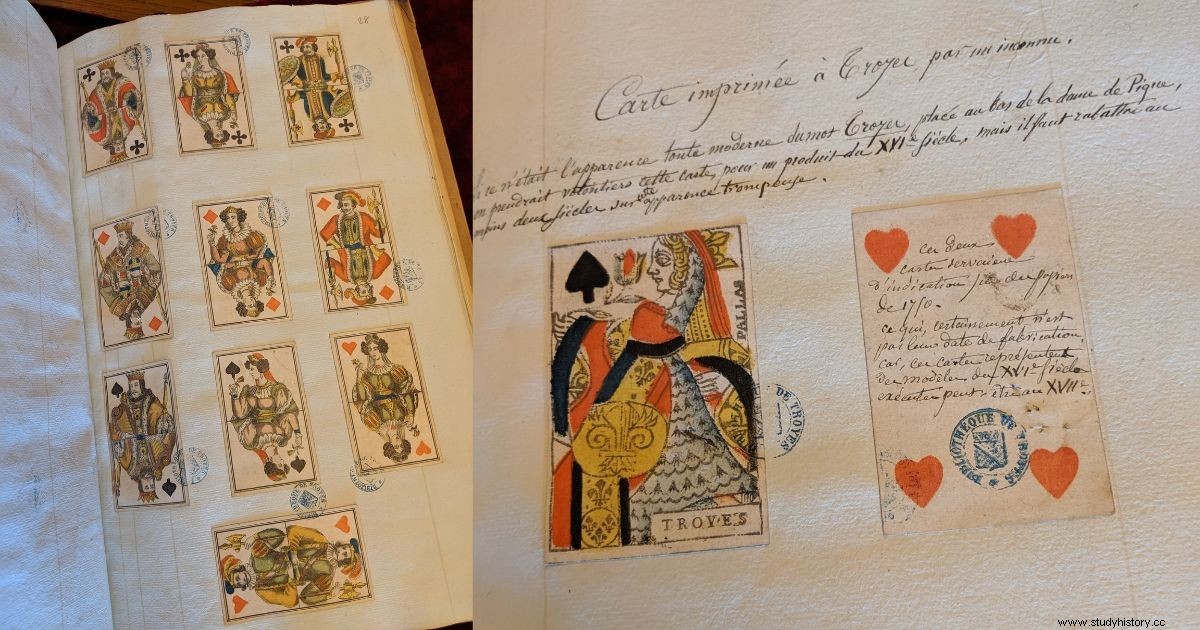
I was lucky enough to be able to observe an album of samples of 18 th Trojan playing cards century, composed by the bookseller and scholar Alexis Socard in 1871. On each page of the collection are pasted prints of complete boards as well as series of different maps colored and classified by workshop in a chronological way. Fabulous testimony to this original feature of Troyes! And the editorial specificities of the city do not stop there.
The Blue Library:the beginnings of popular literature
In 1602, the Oudot brothers invent a new inexpensive formula in Troyes. Notebooks (resembling today's brochures) of small format and lower quality, printed at low cost. Covered with a thicker sheet of blue-grey paper, these "blue books" would later be grouped under the name "Blue Library".
The booklets take up old texts, instructive or entertaining, sometimes illustrated, sometimes modifying them to simplify them. They spread throughout France thanks to peddlers who traveled the country and sold these pleasant stories in public squares, which remained the places of sociability par excellence until the 18 th century.
The success of these editions arouses greed. Competition develops first in Troyes, cradle of the Blue Library, then in Rouen, Limoges and Caen, and soon throughout the country... even crossing borders.
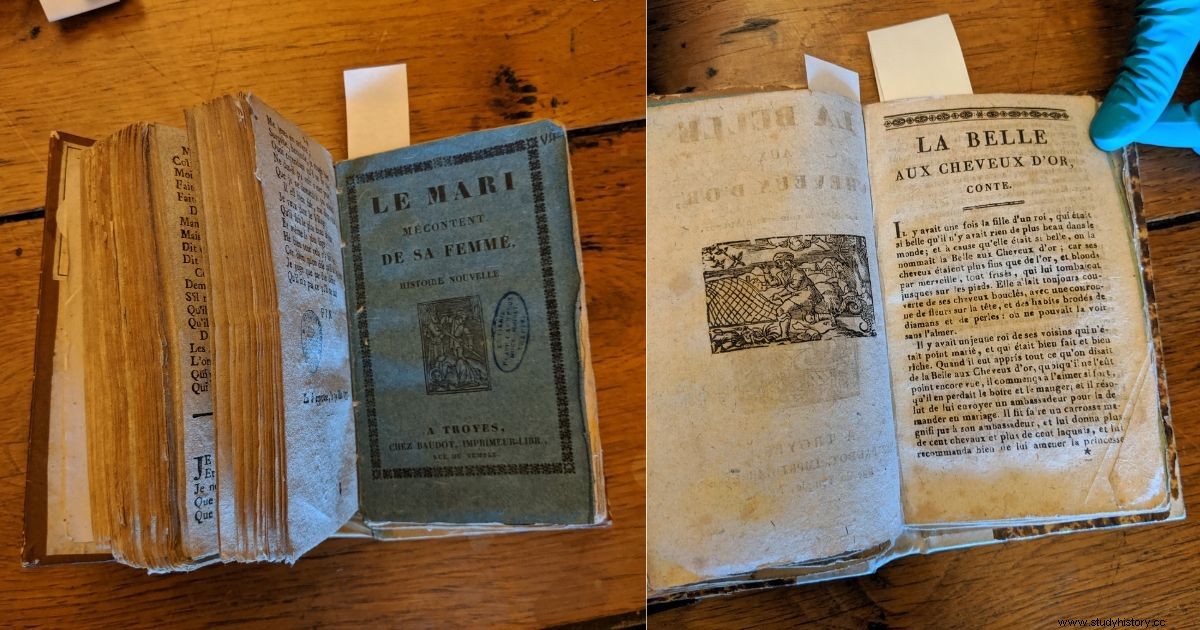
For almost 3 centuries, millions of books thus travel in France:almanacs, poems, novels of chivalry such as Mélusine , lives of saints, songbooks, fictions like Les contes de Perrault , educational books such as primers, cookery or gardening books and astrology advice (Trojan astrologers and their writings being very famous)
Through donations and purchases, the Troyes media library has built up a collection that now includes more than 3,500 Trojan, French and foreign pieces. Fragile booklets that have come down to us thanks to the good care of knowledgeable and passionate bibliophiles!
Commercial cards in vogue
From the second half of the 19th century, a period of large-scale distribution of products, advertising experienced rapid development thanks to the invention of chromo-lithography . This color printing process is used in particular on small formats called advertising cards.
Printed in large numbers and at modest cost, often in the form of collectible sets, billboards are distributed by merchants who want to advertise themselves and retain their customers.
These astonishing and naive "chromos" depict children or couples who engage in activities reflecting the concerns of the time, as a consumer and leisure society emerges. They are sometimes drawn by the greatest artists of the time, such as Jules Chéret or Toulouse-Lautrec .
Witness to a golden age of Troyes industry, the collection constituted by the Troyes media library includes more than 5,000 pieces , remarkable for its number but also for its quality and the diversity of the themes illustrated. Many promote Trojan stores, small clothing, shoe or hat shops, hairdressers, perfumers or tailors… but also the first large stores such as Le Bon Marché or Spring !
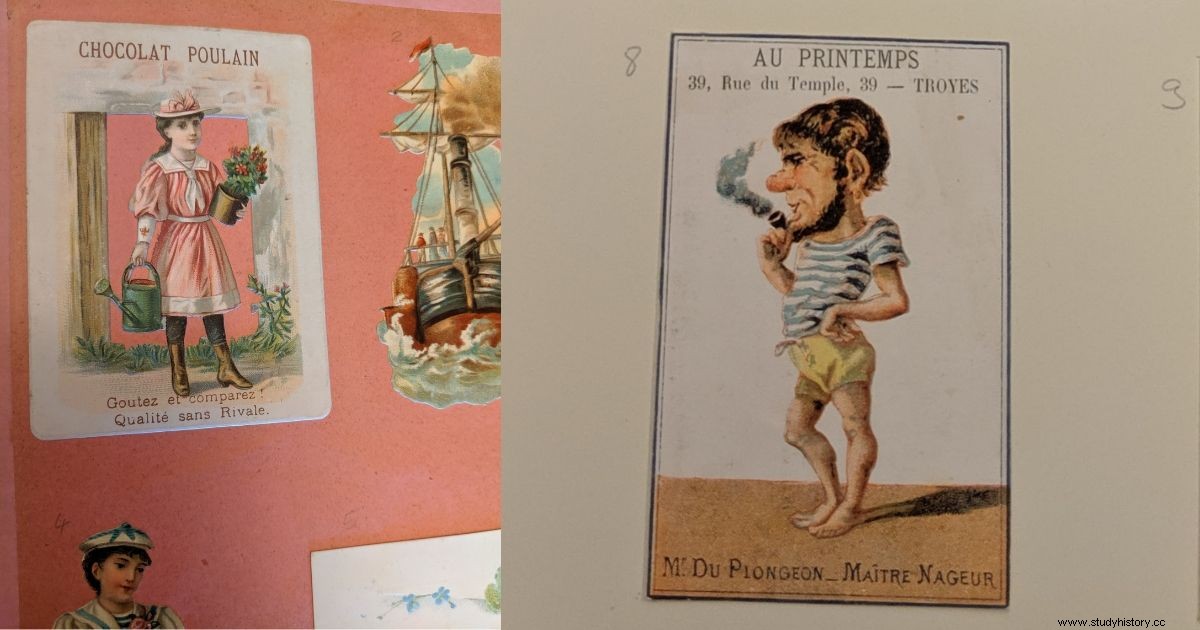
In addition to these marvels, condensed art and history, the Media Library of Troyes is also 210,000 documents in free access … and a good reason to come and visit the city, which conceals many other treasures (discover my article on the tomb of the Prince of Lavau).
I thank the city of Troyes , Catherine Schmit (director of the Troyes Champagne Métropole Media Library) for her warm welcome and her explanations, as well as Étienne Naddéo (curator) for the preparation of the few remarkable works and documents that I had the chance to see!
